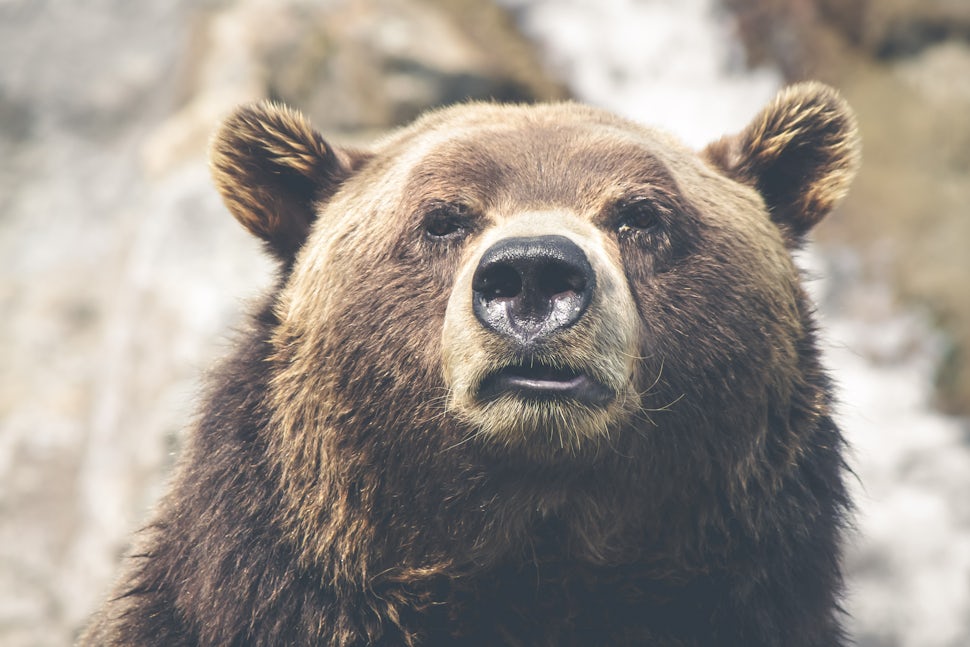Help Protect Wildlife on Your Next Adventure by Picking up Their Poop (Seriously)
On your next hike, take a moment to stop and smell the pines...and poop. Yes, poop.

If you've ever stumbled upon (or stepped directly in) a not-so-quaint pile of animal feces while hiking in the wilderness, then you've landed on gold, my friend.
Well, "gold" to conservationists, anyway.
When you happen across wildlife feces - whether fresh or no - during your trek through the woods, your first thought is likely to keep a close eye on your surroundings in order to avoid a potentially dangerous or injurious run-in with a large animal. After all, a large pile of animal poop in the woods can be a subtle indicator that a predator is nearby. But chances are you've never thought to bend down, pick up the matter and take it with you. And why would you?
But in various areas across the globe, hikers and outdoor enthusiasts are being encouraged to do just that.
In late 2015, Norway began encouraging hikers to collect samples of wildlife feces during their excursions. They were asked to send in the samples to their local nature inspectorate for the purpose of having the samples studied. The goal in having hikers scoop poop? Well, it wasn't to clean up national parks or conservation areas.
 Photo // Ryan Grewell
Photo // Ryan GrewellMany believe that by studying the fecal matter of wild species, we can better understand their lifestyle and population status. Brown Bears in Norway, for example, once numbered in the thousands, but were nearly wiped out in the 20th century, leaving approximately 136 in the wild today. By carefully studying their fecal matter, conservationists and wildlife specialists can formulate proactive methods and solutions to declining numbers, habitat loss, prey loss and more.
And that's not all.
Specialists further believe that the study of wildlife feces can shed light on the reproductive activity of wild species, their genetics and their diet - factors which can be indicative of how well a species is flourishing, or suffering, in any given area. Studying fecal matter of both wild and exotic animals has been a widespread practice flexed by zoos for some time, but rarely are outdoors men (and women) called upon to join in on the "fun." Typically, hikers chase trails in the hopes of sighting wildlife, seeing mountains or finding a new trail - sans poop. But with more people taking an avid interest in the outdoors, hikers offer wildlife biologists and specialists a unique opportunity to gleam information from the lives and lifestyles of wild animals.
Oddly enough, taking a close peek at wildlife feces also shows specialists how wild, often keystone species are reacting to the world around them. Now more than ever, wildlife is forced to adapt to us, with construction, pipelines, building and recreation constantly encroaching on wildlife habitat. Many species have no choice but to relocate, quite literally leaving their natural habitat to find a new one in a range far from the flutter of human activity. Human impact on wildlife can and has resulted in many an animal changing its lifestyle and habits completely. Day-hunting predators, for example, have been known to hunt at night in order to avoid humans, and may change the location in which they reproduce. This is important for conservationists, as hunting habits of one species directly impact the survival of others. Their fecal matter can tell us how impactful human activity is and what needs to change in order to help conserve these species. For all intents and purposes, studying animal poop sheds much-needed light on how wildlife is living, adapting and surviving.
 Photo // Ross Sokolovski
Photo // Ross SokolovskiAs a responsible outdoors adventurer, you are always aware of the impacts and consequences our interactions both in and with nature can have on wildlife and the environment around us. But it's important to understand that what affects one species always subsequently affects another; this could not be more true for keystone species and apex predators. Animals like bears and wolves are responsible for many other species in their food-chains and ecosystems, but when the numbers of these species decline, every species below them is affected. Taking a minute or two out of your next hike to scoop some poop might just help protect and conserve valuable wildlife. But more than that, it is a wonderful opportunity to learn more about the species in your area, their population status' and what is being done to preserve them.
And, if you're interested in giving poop collecting a go, here are a few tips to help you along:
- Use a resealable plastic bag to collect fecal samples
- Turn the bag inside out when collecting the sample to avoid contaminating the DNA
- Plan ahead by contacting your local conservation society or nature inspectorate and ask them where samples can be deposited
- If you're poop-shy ('cause no one enjoys hiking with bear poop on their hands, unless your Bear Grylls) bring a pair of rubber gloves with you for the collection process, but ensure you don't litter them
Cover photo by Thomas Lefebvre
We want to acknowledge and thank the past, present, and future generations of all Native Nations and Indigenous Peoples whose ancestral lands we travel, explore, and play on. Always practice Leave No Trace ethics on your adventures and follow local regulations. Please explore responsibly!
Do you love the outdoors?
Yep, us too. That's why we send you the best local adventures, stories, and expert advice, right to your inbox.







